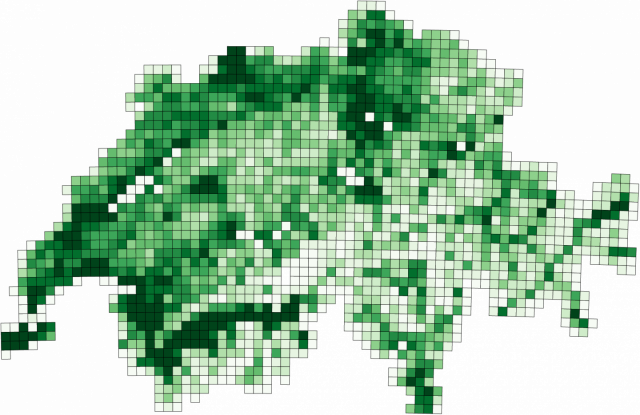BiodiverCity Zurich?
Written by Leslie Bournot and Flurin Bischoff, students of the University of Zurich
Switzerland's biodiversity is decreasing continuously with more than a third of native species being endangered. This decrease is among other reasons caused by the loss of precious habitats and insufficient connectivity between them (Stadt Zürich, 2024). As an article by SRF pointed out in 2022, biodiversity in Swiss cities is, however, surprisingly high, especially when compared to the agricultural land around them. Cities offer a richer range of diverse habitats than intensely used agricultural land and thus are also home to more diverse species (SRF, 2022). Scientific literature shows similar findings, underscoring that urban areas can inhabit higher biodiversity in comparison to intensely used agricultural land (Turrini & Knop, 2015: 1665).
Conservation of urban biodiversity is not only important for the affected species, but also provides ecosystem services such as human health, happiness and the feeling of connectedness to nature (Soanes et al., 2023: 3). But there is an inequality in the distribution of biodiversity richness. Studies have even found that the biodiversity is higher in affluent neighbourhoods than in less privileged quarters (SRF, 2022).
The city of Zurich has published a paper on the issue of urban diversity and its approach to enhance it. According to that paper a lot of urban diversity comes from small-scaled areas like gardens or public parks. However, there is also the need for bigger, contiguous protected biotopes. These areas need to be connected by ecological corridors that allow mobility for animals. In urban areas these corridors can be water bodies, forests but also infrastructure like railway tracks (Stadt Zürich, 2024: 8). This approach is also in line with scientific literature as Turrini & Knop (2015: 1653) emphasise the importance of the amount of vegetated area and the reduction of patch isolation. Zurich aims to create 225 hectares of additional ecologically valuable areas by 2040, which correspond to an enhancement of 15 percent (Stadt Zürich, 2024: 42). Soanes et al. (2023) propose similar actions for biodiversity conservation.
However, it is important to keep in mind that cities are not the solution for biodiversity crisis. The offered habitats can be valuable but are mostly very small and cannot compensate for biodiversity losses from other places. Also, a lot of cities share the same species – on a small scale there is a lot of diversity but it's the same species for different places like Zurich and Paris. So, the urban diversity between different cities is very small (SRF, 2022).
Sources:
Schweizer Radio und Fernsehen (SRF) 2022. Warum die Artenvielfalt in Städten höher ist als auf dem Land, url: https://www.srf.ch/wissen/natur-tiere/biodiversitaet-warum-die-artenvielfalt-in-staedten-hoeher-ist-als-auf-dem-land, accessed: 25.11.2024.
Soane, Kylie; Taylor, Lucy; Ramalho, Christina E.; Maller, Cecily; Parris, Kirsten; Bush, Judy; Mata, Luis; Williams, Nicolas S.G. & Threlfall, Caragh G. 2023. Conserving urban biodiversity: current practices, barriers, and enablers. Conservation Letters, 16(3), 1-10.
Stadt Zürich (Hrsg.) 2024. Fachplanung Stadtnatur, Zürich.
Turrini, Tabea & Knop, Eva 2015. A landscape ecology approach identifies important drivers of urban biodiversity. Global Change Biology, 21(4), 1652-1667.
Comments
By accepting you will be accessing a service provided by a third-party external to https://www.mountainapp.net/
This website uses no external trackers, no analytics, just session cookies and values your online privacy.



